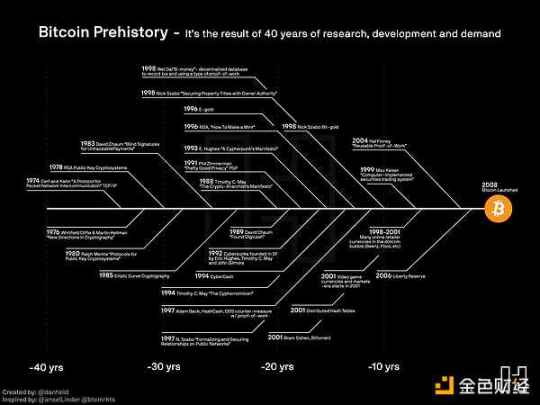This day symbolizes death and rebirth.
Written by: Dan Held, former Market Director of Kraken
Translated by: 0xjs@Golden Finance
The Collapse of the Old System
Satoshi Nakamoto released the white paper on October 31, 2008. This was during the most desperate moments of the 2008 financial crisis. In this trust-based world, trust had vanished.
But why October 31? Why this date? It certainly wasn't because Satoshi liked Halloween; it must have a deeper meaning. Satoshi's every action demonstrated careful rigor.
Before releasing the white paper, Satoshi had been researching Bitcoin for at least a year and a half.
I believe I have solved all these little details during the past year and a half of coding, and there are many. The functional details are not covered in this article, but the source code will be released soon. — Satoshi Nakamoto
On August 18, 2008, Satoshi registered Bitcoin.org through anonymousspeech.com. Throughout 2008, Satoshi was prepared, waiting to press the send button. What was special about October 31?
Welcoming the New
I believe Satoshi published the Bitcoin white paper on October 31 to commemorate the ancient Gaelic festival of Samhain, which is also the day Martin Luther nailed his 95 Theses to the church door. Both represent the end of an old era and the beginning of a new one.
Samhain marks the end of the harvest season and the beginning of winter.
The early Catholic Church adopted some festivals like Samhain to gain followers and established "All Hallows' Eve" on October 31, 835. This is what we refer to as "Halloween" or "All Hallows' Eve," an important holiday in the Catholic world.
On October 31, 1517, Martin Luther nailed his Ninety-Five Theses to the door of the Castle Church (dedicated to All Saints). Luther was outraged by the idea that sinners could alleviate their sins through payment or unpaid labor. Under papal rule, these were seen as part of the church's treasury, allowing the powerful to continue living lavishly at the expense of the people. Luther undermined the authority of the Pope with his Ninety-Five Theses, initiating the process of the Reformation. Luther's ideas became very popular, spreading around the world through the newly invented printing press, forever changing the course of history.
Similarly, Satoshi was outraged by the massive betrayal of existing financial institutions:
The fundamental problem with traditional currency is that it requires trust to function. We must trust that central banks will not devalue the currency, but the history of fiat currency is filled with betrayals of that trust. We must trust banks to safeguard our funds and transfer them electronically, yet they lend out funds during credit bubbles while having pitiful reserves. — Satoshi Nakamoto
Satoshi utilized 40 years of technological advancement to create Bitcoin. The Bitcoin blockchain allows anyone in the world to access and transfer it, just as the printing press allowed Martin Luther's ideas to spread.

Both Satoshi and Luther carefully chose October 31 to announce their ideas, a day that symbolizes death and rebirth. Both saw the imprisonment of people by these legacy systems and suggested overthrowing existing authorities as a solution.
Bitcoin marks the end of fiat currency and the beginning of a new monetary standard. Let us move forward bravely and build a new world.
"Now it is theirs, and the future I strive for is mine." — Nikola Tesla

免责声明:本文章仅代表作者个人观点,不代表本平台的立场和观点。本文章仅供信息分享,不构成对任何人的任何投资建议。用户与作者之间的任何争议,与本平台无关。如网页中刊载的文章或图片涉及侵权,请提供相关的权利证明和身份证明发送邮件到support@aicoin.com,本平台相关工作人员将会进行核查。




